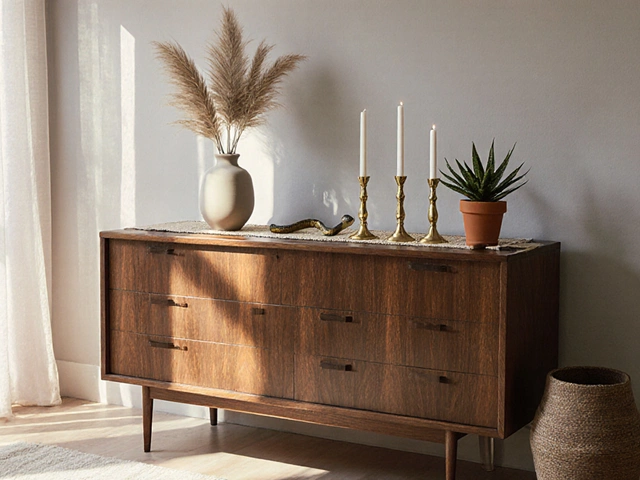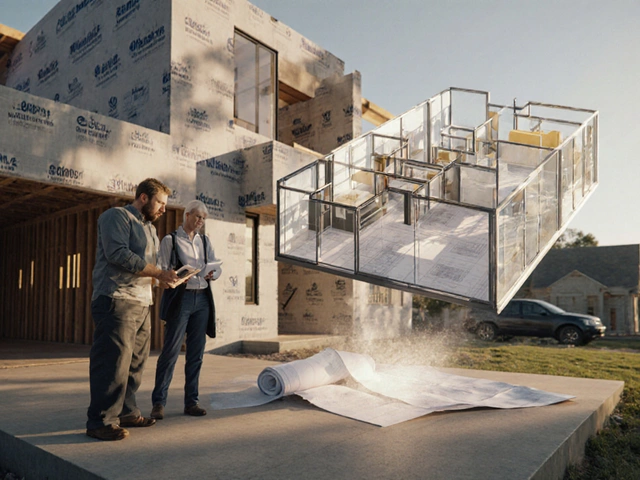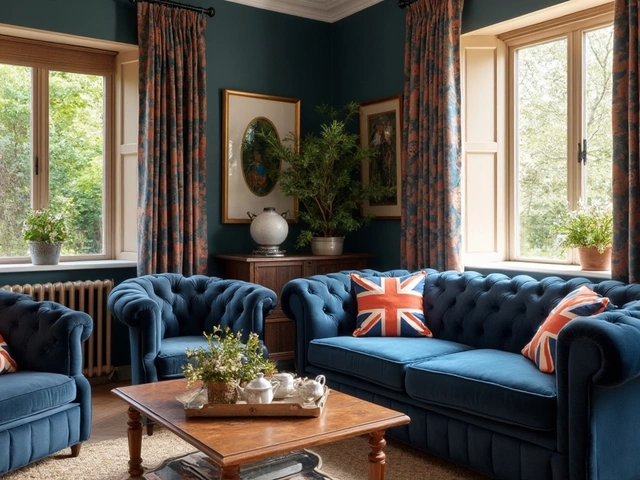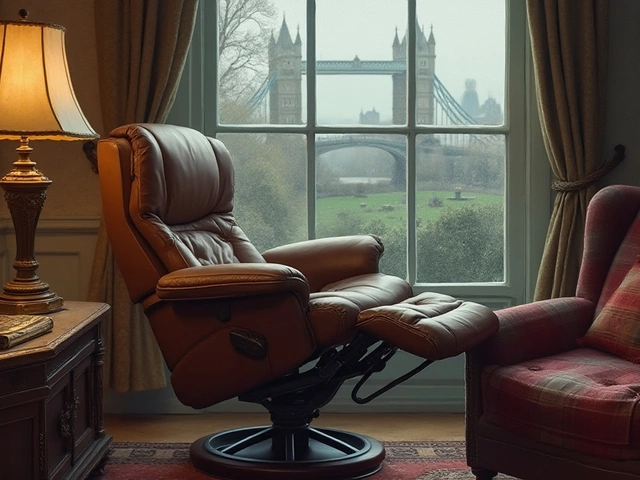If you’ve ever walked into a room and thought, “I could totally do this better,” you’ve probably flirted with the idea of being an interior designer. But what does it take to actually get there? The path is less about champagne curtains and more about getting your hands dirty with real skills, official training, and a pile of projects that prove you know your stuff.
Forget the myth that you have to be born with some wild creative gift—most solid interior designers get there with a mix of practical learning and real experience. Sure, some people go the traditional route with a college degree, but a lot of pros kick off with online courses, hands-on apprenticeships, and certifications that show clients and bosses they mean business.
- Education: Degrees, Diplomas, and Courses
- Licensing and Certifications
- Core Skills Needed
- Building Your Portfolio
- Getting Real-World Experience
Education: Degrees, Diplomas, and Courses
If you want to break into interior design, the education mix can look pretty different from one person to the next. In the U.S., a bachelor’s degree in interior design or a related field is the usual starter. It’s not just about learning how to make things look good—these programs go deep into building codes, lighting, and even basic architecture. Schools like Savannah College of Art and Design and Parsons are known for their strong design degrees, but you can find solid programs in a lot of local universities or technical colleges too.
If spending four years on a degree sounds like too much, diplomas and associate degrees take only two years or less, and often focus on the practical side. Community colleges and design schools usually offer these and they’ll give you the core skills to get started. Some folks even jump in with a bunch of focused courses—think online classes in CAD software or color theory. Stack up enough of these certificates, and you’re proving your chops in the field.
Here’s a quick side-by-side to show the difference in typical program lengths and what you’ll learn:
| Type | Length | Topics Covered |
|---|---|---|
| Bachelor's Degree | 4 years | Design theory, drafting, CAD, architecture basics, building codes |
| Associate Degree | 2 years | Interior design basics, materials, space planning, digital skills |
| Certificate/Diploma | 6 months to 1 year | Specific skills: software, color, lighting, styles |
Professional groups like the American Society of Interior Designers (ASID) even offer certificates for online training. These can be helpful if you want to show clients you’re keeping up. And if you’re thinking internationally, places like the UK and Australia usually ask for a diploma or similar formal training to call yourself a designer.
If someone tells you a degree is the only way in, don’t buy it. Plenty of designers started with short courses or part-time diplomas and worked their way up with killer portfolios. No matter what route you go, make sure to learn the right mix of technical and creative skills. The keyword interior design always comes down to what you can actually do, not just what’s on your diploma.
Licensing and Certifications
People always wonder if interior designers actually need a license to practice. The answer depends on where you live and what kind of stuff you’ll work on. In the U.S., some states demand a license for anyone using the title “interior designer” or when working on projects in public buildings like schools or hospitals. If you’re handling regular homes, though, you might get away with no license at all. Check out your state or country’s rules before diving in.
The big test in the field is the NCIDQ Exam—that’s the National Council for Interior Design Qualification. If you want to be seen as a legit, professional interior designer, passing the NCIDQ carries a lot of weight. Here’s the catch: you need a mix of college-level education and real-world work experience before you can even take it. Basically, they want to make sure you know more than just picking out couch colors.
On top of that, there are some specialized certifications that can boost your street cred, especially if you want to focus on green design or kitchen/bath design. For instance:
- LEED Accredited Professional – shows you know sustainable, eco-friendly design.
- Certified Kitchen & Bath Designer (CKBD) – respected in the kitchen and bath industry.
- WELL Accredited Professional – covers the ins and outs of healthy living spaces.
These extras aren’t required everywhere, but clients and employers do notice them. Sometimes, just having one makes the difference between landing a project or being passed over.
Here’s a quick look at how licensing shakes out in a few key U.S. states:
| State | License Required? | NCIDQ Needed? |
|---|---|---|
| Florida | Yes, for "interior designer" title | Yes |
| California | No for residential, Yes for commercial/public | Yes for commercial/public |
| Texas | Yes, for State Registered Interior Designer | Yes |
| New York | Yes for certain projects | Yes |
| Illinois | Yes, for title use | Yes |
Bottom line: if you want to stand out in the interior design crowd (and stay on the right side of the law), check your local rules, and start looking at those certifications. They’re not always mandatory, but they definitely open doors and help you get taken seriously.

Core Skills Needed
If you really want to make it in interior design, it’s not just about picking paint colors. You need a bunch of practical abilities that pull a project together from both the creative and the technical side.
First up, communication is huge. You’ll spend a lot of time talking with clients—figuring out what they want, working with contractors, and explaining your ideas without confusing anyone. If you don’t get the message across (or you can’t read between the lines), projects can tank fast.
Then there’s space planning. Designers should know how to make rooms work—think less about whether the couch is pretty and more about how it fits with the flow of everyday life. Measuring skills are a must. One inch off, and your whole plan might fall apart.
Visual skills matter, too. You need an eye for color, lighting, and details, but also the ability to use digital design tools like SketchUp, AutoCAD, or even good old PowerPoint for simple mood boards. These aren’t just “nice-to-have”; most job listings want you to have basic software skills at the very least.
- Communication: Clear with clients, teams, and vendors
- Space Planning: Effective layouts, good flow in every room
- Technical Know-How: Measurements, building codes, basic structures
- Visual Design: Color theory, light, finishes, software tools
- Project Management: Budgeting, timelines, contractor wrangling
You’ll also need project management skills—meaning you can keep track of money, schedules, and people. Mess up just one of those and the whole job goes sideways. A survey from Houzz in 2024 found that 70% of clients cared more about timely delivery and organization than almost anything else.
| Skill | Why it Matters |
|---|---|
| Communication | Prevents costly misunderstandings, keeps clients happy |
| Space Planning | Makes rooms functional and appealing |
| Technical Know-How | Ensures safety and compliance |
| Visual Design | Brings creative ideas to life, wows clients |
| Project Management | Keeps projects on time and under budget |
The wild part? Most of these skills can be learned. There are certificate programs and workshops for just about all of them, and employers look for up-to-date, real-world know-how more than anything written on a diploma. Focus on getting these nailed and you’ll be way ahead of the crowd.
Building Your Portfolio
Your portfolio is your golden ticket in interior design. When clients or employers want to see what you can do, they’re not interested in wordy resumes—they want proof you can pull off real spaces. Even if you’re just starting out, you can pull together a killer portfolio that turns heads.
The top portfolios show a mix of commercial and residential projects if you have them, or you can get creative by redesigning your own space, helping out friends and family, or even whipping up concepts in design software (like SketchUp or AutoCAD). Don’t forget to take killer before-and-after photos—the difference matters more than fancy camera work.
Besides just pictures, explain exactly what you did in each project. Did you pick out all the furniture? Tackle the budgeting? Solve a weird layout problem? That level of detail sets you apart.
- Include 6–12 of your best projects—quality beats quantity every time.
- List design challenges (like small rooms or tight budgets) and how you solved them.
- Mention the tools or software you used (Photoshop, Revit, 3D renderings, hand sketches, etc.).
- Keep your portfolio updated—outdated styles or low-res pics scream amateur.
- Add positive comments from real clients when you can.
These days, digital portfolios rule. Try easy DIY website builders like Wix or Squarespace—they’ll make everything look sharp without needing to code anything. PDF portfolios also work for in-person interviews, but they should be simple and easy to flip through on a screen.
Just how important is a portfolio? According to a 2024 survey by the American Society of Interior Designers (ASID), 83% of hiring managers said the portfolio weighed more than a candidate’s degree in their final decision. Now that’s telling.
| Portfolio Element | Why It Matters | Pro Tip |
|---|---|---|
| Before & After Photos | Shows your impact on a space clearly | Use the same angle and lighting for both shots |
| Diverse Projects | Highlights versatility | Feature different rooms, budgets, and client types |
| Process Explanations | Shows how you solve problems | Write brief, clear descriptions—not essays |
| Client Feedback | Builds trust and credibility | Ask for quotes after each project wraps |
Your portfolio is never really done. The more projects you complete—paid or not—the better your story. Keep plugging away, swap in your newest stuff, and watch your opportunities multiply.
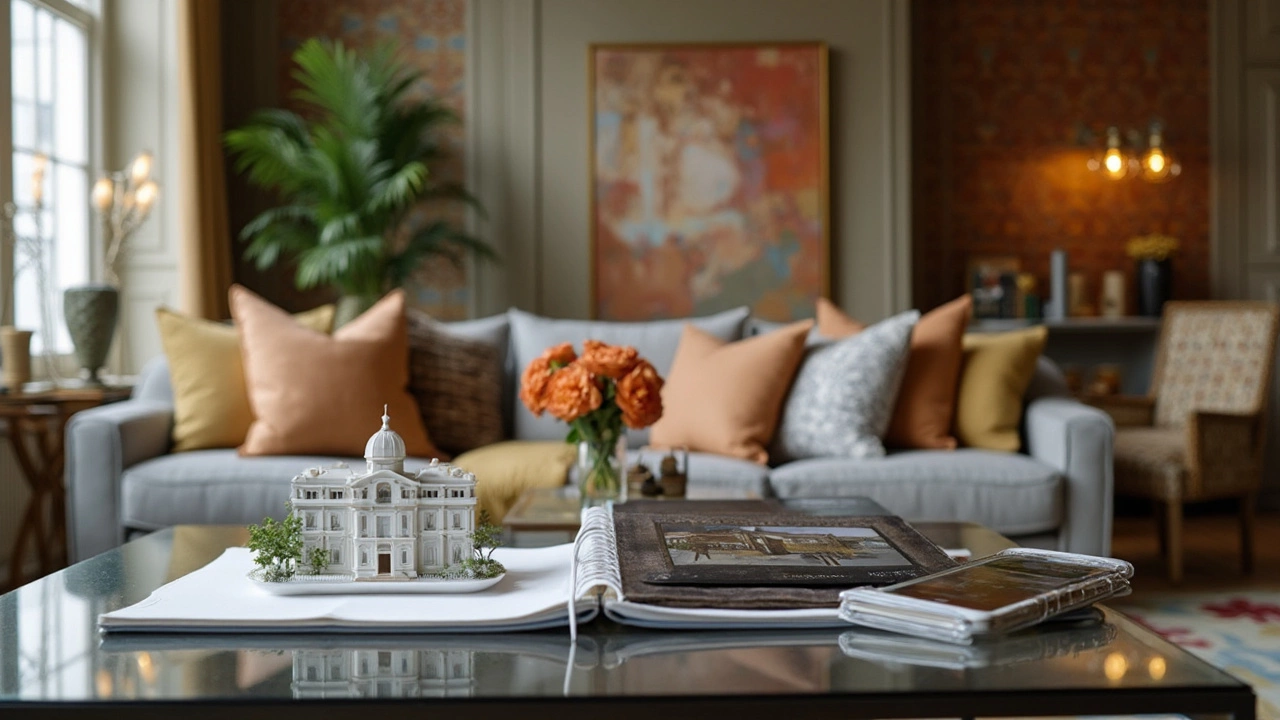
Getting Real-World Experience
Nothing beats hands-on work when you're trying to make it in interior design. You don’t just wake up one day and instantly know how to work with a client, pick out finishes, or spot what will really pull a space together. The big game changer? Jumping into the field as early as you can and practicing on real projects, even if they aren’t glamorous.
Most interior designers start with internships or assistant roles. Some companies offer internships that last anywhere from a summer to a full year. According to the U.S. Bureau of Labor Statistics, around 25% of new designers get their first shot through an internship. Even unpaid gigs matter—those experiences are gold for your portfolio and teach you things that textbooks just don’t cover, like client communication and on-site problem solving.
If internships aren’t your thing or aren’t an option, try helping friends or family redesign their spaces. Before and after photos from these "DIY projects" can make awesome additions to your portfolio. Design competitions are another way to get noticed; many are open to students and self-taught designers. Winning (or even just participating) can boost your confidence and show future clients you can handle real challenges.
- Apply for local or online internships with design studios, furniture stores, or home renovation companies.
- Volunteer your design skills for community projects, like redoing a local shelter’s lobby or a school’s common area.
- Work part-time at a furniture or home decor store—this puts you in the middle of design talk all day.
- Tackle real rooms with friends or relatives and ask to take plenty of pictures.
Few rookie designers get paid gigs right away. Getting your first project often means doing some work for little or no money just to build a portfolio. But believe it or not, about 60% of interior designers land their first paying clients through referrals from these early projects. It’s about hustle and building trust.
| Method | % of Respondents* |
|---|---|
| Internship | 25% |
| Freelance/Volunteer Projects | 30% |
| Retail/Home Decor Jobs | 20% |
| Competitions/Online Platforms | 15% |
| Family/Friends' Projects | 10% |
*Source: Industry poll by Interior Design Society, 2024
Bottom line: don’t wait for the “perfect” opportunity—jump in where you can, keep building your network, and let real-world experience teach you the stuff you can’t Google. Each project, big or small, helps you get better and builds your name in the industry.

